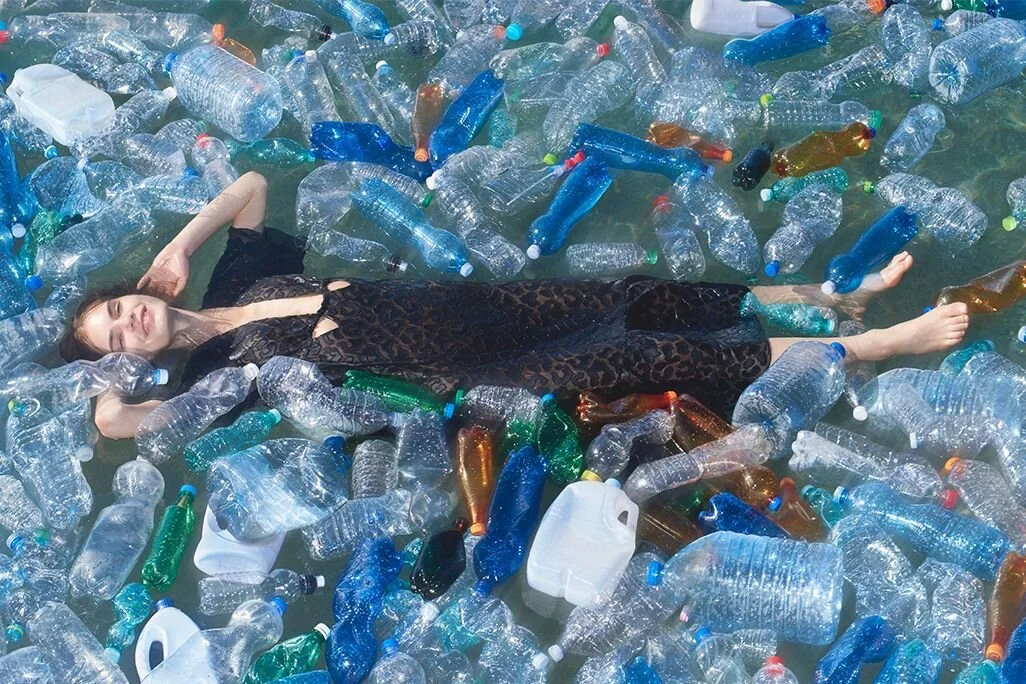- À New Wave to Fashion, À New Way of Living. Download Now on iOS Android Canada SS22
- hello@alahausse.ca
The Basics and Statistics Behind Textile Recycling

Shifts in the Fashion Industry and Joining the Wave of Sustainable Style
January 10, 2023
Feeling good, Looking Better; Through Sustainable Fabrics
January 10, 2023- #HAUSSEPEOPLE
- #WEARYOURPURPOSE
- 2022 trends
- Affordable
- Conscious Buying
- Consumers
- E-Textiles
- eco-conscious
- Eco-friendly Fashion
- eco-label
- Fashion
- Fashion Industry
- Fashion Market
- Future Fashion
- future of fashion
- labels
- RentalClothing
- statistics
- Sustainability
- Sustainable Fashion
- Sustainable Global Goals
- Sustainable Textile
- Textile Waste
- Textiles
- Transparency

Written by: Samantha Hamann
Reduce, reuse, recycle. When we hear this phrase, it usually brings to mind images of plastic bottles, cardboard boxes, aluminum cans and so on. What it does not typically bring to mind is clothing, shoes and other fashion pieces. Every year, around 11 billion kilograms of clothing go to waste every single year in North America alone (source: TheGoodTrade). However, “95% of all used clothing is recyclable” (source: SmartASN). Of this, only around 15% of used clothing is recycled.
What can we do to increase the amount of recycled textiles and decrease the number of items sent to landfill? Follow the three R’s: reduce, reuse, and recycle.

Reduce,
Reducing does not have to mean clearing out and downsizing every part of your closet. Knowing what you have in your closet already is a great start. It is the best way to cut down on adding excess or unintentional duplicates. Tackle the addition of excess at the source! When shopping, if you are unsure about an article, let the decision sit for a day (or until your next trip). Use this time to consider what purpose the piece adds to your closet. Clothing rental programs, such as the one offered within the ÀLA.HAUSSE app, can be a great way to try an item for a shorter period of time before fully committing to it (or if it is only needed for a particular event). If you are creating a wardrobe, look for pieces that can be worn in multiple seasons and for multiple occasions. This can include items which can be layered or worn alone as well as timeless pieces such as a chic black dress or a well-fitted blazer.
Reuse,
Upcycling old pieces at home and mending to extend the piece’s wearability. This can be as simple or as intricate of a process as you want it to be. Tailors and shoe repair shops can also revitalize your favourite pieces and are often smaller owned businesses who take great pride in their craft and ensure a great end result. Using the same article more. To keep it fresh: try changing the look by wearing it differently and changing the styling. Reselling or donating items to give the piece a new life in another closet. The same places you use to donate or sell can also be a great resource to find additions for your own sustainability-based wardrobe. The places we contribute to are the ones which shape our world and the impact we have upon it. For more tips on reuse and contributing to a circular economy, check out our previous article.


and Recycle!
Sites such as Earth 911 and Junkyards Near Me offer easy access to a map based search of textile recycling locations. Most major chain second hand and charity stores, such as Goodwill, also take clothing for recycling. However, the programs offered will vary depending on your location. Diabetes Canada offers curbside pickup programs in some locations. They also have various drop-off boxes across the country for clothing, shoes, and other textiles as well as other small household items. The site states that they divert over 100 million pounds (or around 45.4 million kilograms) of clothing and furniture waste from landfills each year. Terracycle and their subsidiary Zero Waste Boxes send pre-labelled boxes to your address that you can send back when they are filled for proper recycling. However, these boxes come with a cost unlike in-person textile recycling facilities.
The Textile Recycling Process
The first step of textile recycling is receiving donations from consumers and brands alike depending on the scope of the collection company. The facility then separates the resellable clothing from the articles bound for recycling. At this step, items which are unsuitable for recycling are also filtered out and sent for disposal (source: The Good Trade).
Textile recycling includes taking worn-down fabrics of any kind (synthetic, organic, mixed, etc.) and converting them into new items such as clothes, rags, mattress filling, and other such products. Often, recycled products are grouped together by colour and material so the reuse of them requires less processing. Textile dying is one of the most polluting parts of clothing production because of the run-off from the dye and the water used within the process into local streams which then spreads into global water systems through the water cycle as the contaminants within the water do not dissolve or dilute (sources: pirkani.eco and the balance small business).
Next, external elements such as zippers, buttons, and clasps are removed and separated for reuse. The articles are then grinded into fibers to either be used as a form of stuffing or to be reworked into threads (for natural materials such as organic cotton) or pellets (for synthetic materials such as polyester) to be used in the production process of new articles of clothing and other textiles.


Reused cotton also saves around 20,000 liters of water per kilogram of cotton” (source: Edgexpo). However, the recycled fibers and threads alone are typically of a lesser quality than their source. One potential remedy for this is combining both virgin (new) fibers with recycled ones in producing clothing and other articles to increase the strength and durability of the garment or item (source: Chen et al.). A method similar to this is already being used in some major retailers such as Adidas, Patagonia, and Girlfriend Collective with use of post-consumer clothing, plastic bottles, fishing nets, and other materials (source: Insider).
Next, external elements such as zippers, buttons, and clasps are removed and separated for reuse. The articles are then grinded into fibers to either be used as a form of stuffing or to be reworked into threads (for natural materials such as organic cotton) or pellets (for synthetic materials such as polyester) to be used in the production process of new articles of clothing and other textiles. Reused cotton also saves around 20,000 liters of water per kilogram of cotton” (source: Edgexpo). However, the recycled fibers and threads alone are typically of a lesser quality than their source. One potential remedy for this is combining both virgin (new) fibers with recycled ones in producing clothing and other articles to increase the strength and durability of the garment or item (source: Chen et al.). A method similar to this is already being used in some major retailers such as Adidas, Patagonia, and Girlfriend Collective with use of post-consumer clothing, plastic bottles, fishing nets, and other materials (source: Insider).
It is worth noting that facilities for textile recycling processes are often not available locally and the products collected are instead offshored to other countries to be recycled. While this is not an issue of transportation due to our highly connected global economy, it is an issue of sustainability and the effect the amount of transport needed can have on the planet and our ecosystems. As well, the offshoring of our textiles to be recycled or reused in other places creates an influx product without (necessarily) an influx of demand.
Does the effort of recycling textiles in an effort to keep them out of landfills offset the impact of sending them overseas for processing and resale? How about if the products are processed and then sent back for sale? There is no perfect solution for recycling textile waste once it is created which is why the focus of the fashion sustainability movement has been mainly on reduction and reuse.
Sustainability is an imperfect process and the solutions within it are evolving and being improved upon by science, technology, and overall innovation by companies, governments, and individuals alike. So when we think about changes towards a greener future and lifestyle, it is not always the best alternatives, but it is better actions. Overall, textile recycling significantly reduces the amount of waste produced by the fashion industry by instead making it into usable materials and in some cases putting it back into creating clothing. This outcome outweighs the alternative of the articles being tossed by extending the lifespan of the piece and contributing to a circular method of production. So when you are trying to divert textile waste from landfills, try to first reduce, then reuse, and then recycle.

À New Wave to Fashion. À New Way of Living.
Your First and Last Sustainable AI and Social Powered P2P/B2C Multifunctional Ecosystem (BUY/SELL/RENT/LEND/ SWAP/GIFT), for Me and You.
Apple: https://apple.co/3F8EgcJ
Android: https://bit.ly/3f7jEY3
Via ÀLA.HAUSSE’s Multi-functional and Multi-purposeful Fashion Ecosystem- BUY/SELL/RENT/LEND mobile application, INDIVIDUALS & brands ( BETA) are encouraged to REBUY, RESELL, REUSE and UP-CYCLE their personal “Clossets” aka Clothing Assets. Through this consumerism habit shift we slow down the urgency on fashion carbon footprint, aiding sustainability as a whole.
Launching NOW on iOS Android Canada
Give me a read: shorturl.at/rIMT8
More stories on www.alahausse.ca, Medium & Hackernoon. Follow & Tag @ala.hausse
#ALAHAUSSE #WEARYOURPURPOSE #HAUSSEPEOPLE
References:
- https://www.ncbi.nlm.nih.gov/pmc/articles/PMC8257395/
https://www.smartasn.org/resources/frequently-asked-questions/
https://www.thegoodtrade.com/features/textile-recycling-process
https://www.thebalancesmb.com/how-garment-recycling-works-2877992
https://www.thebalancesmb.com/textile-recycling-facts-and-figures-2878122
https://www.thebalancesmb.com/the-basics-of-recycling-clothing-and-other-textiles-2877780
https://www.buzz.ie/news/irish-news/fast-fashion-emissions-sustainable-clothing-26814106
https://greenactioncentre.ca/reduce-your-waste/how-to-recycle-your-clothes/
https://www.insider.com/companies-using-recycled-plastic-in-products#nike-10
https://wrwcanada.com/en/get-involved/resources/textiles-themed-resources/textiles-waste-facts
https://www.cbc.ca/news/canada/british-columbia/textile-waste-recycling-bc-canada-1.6357584








